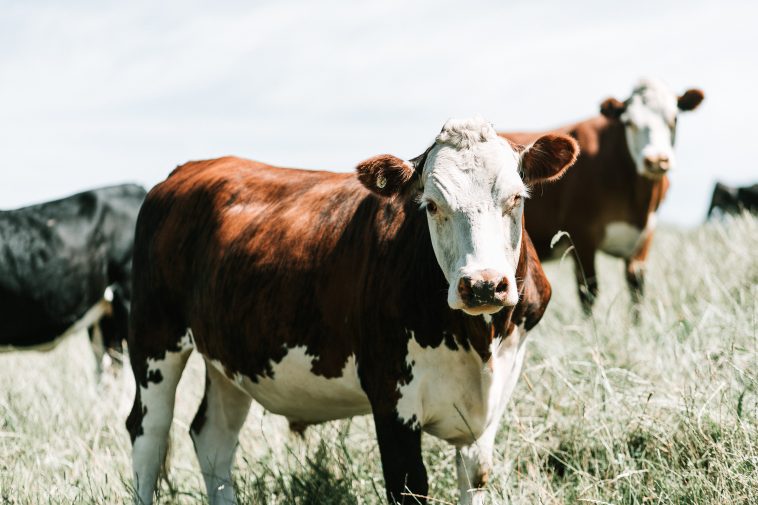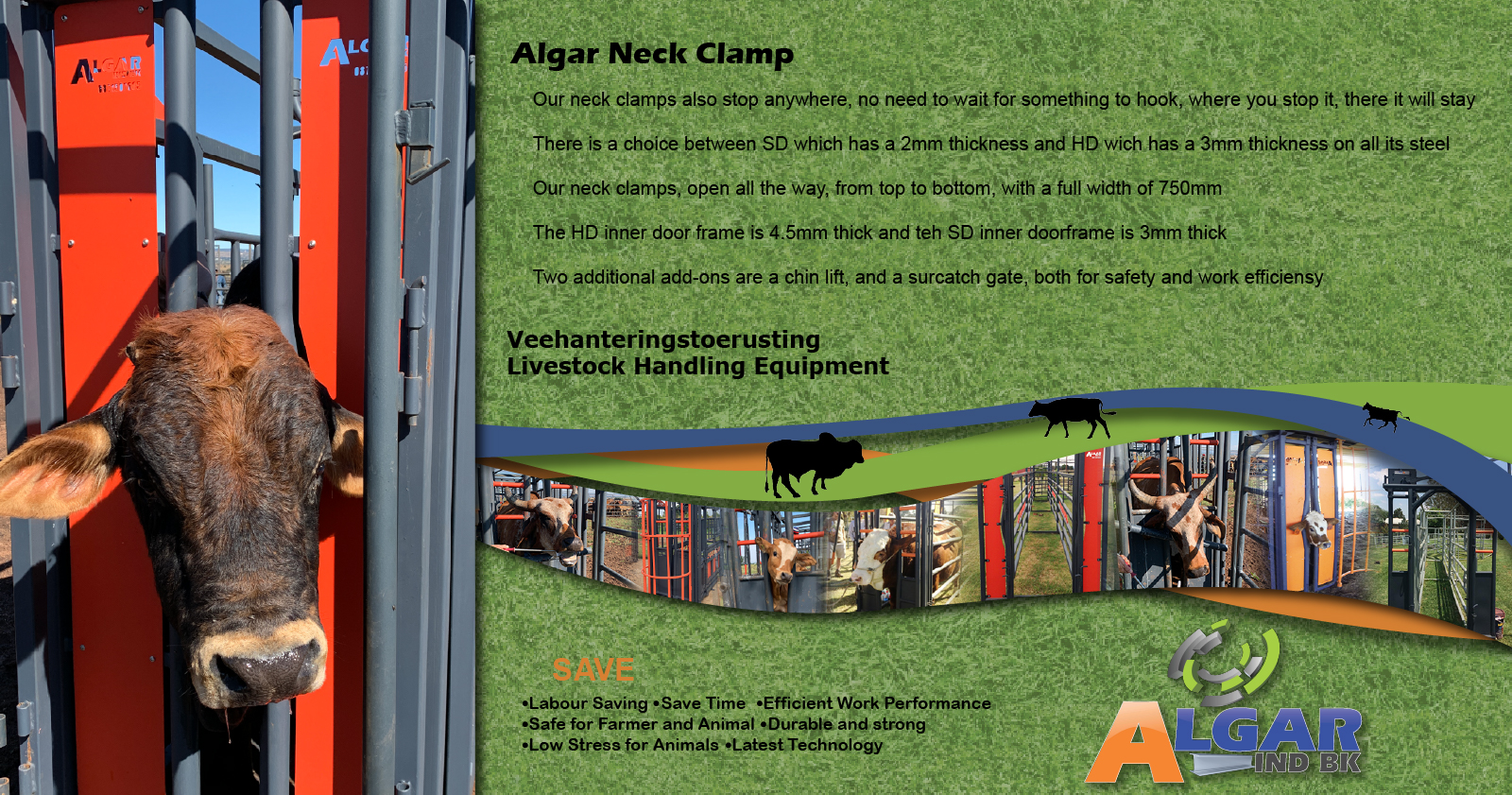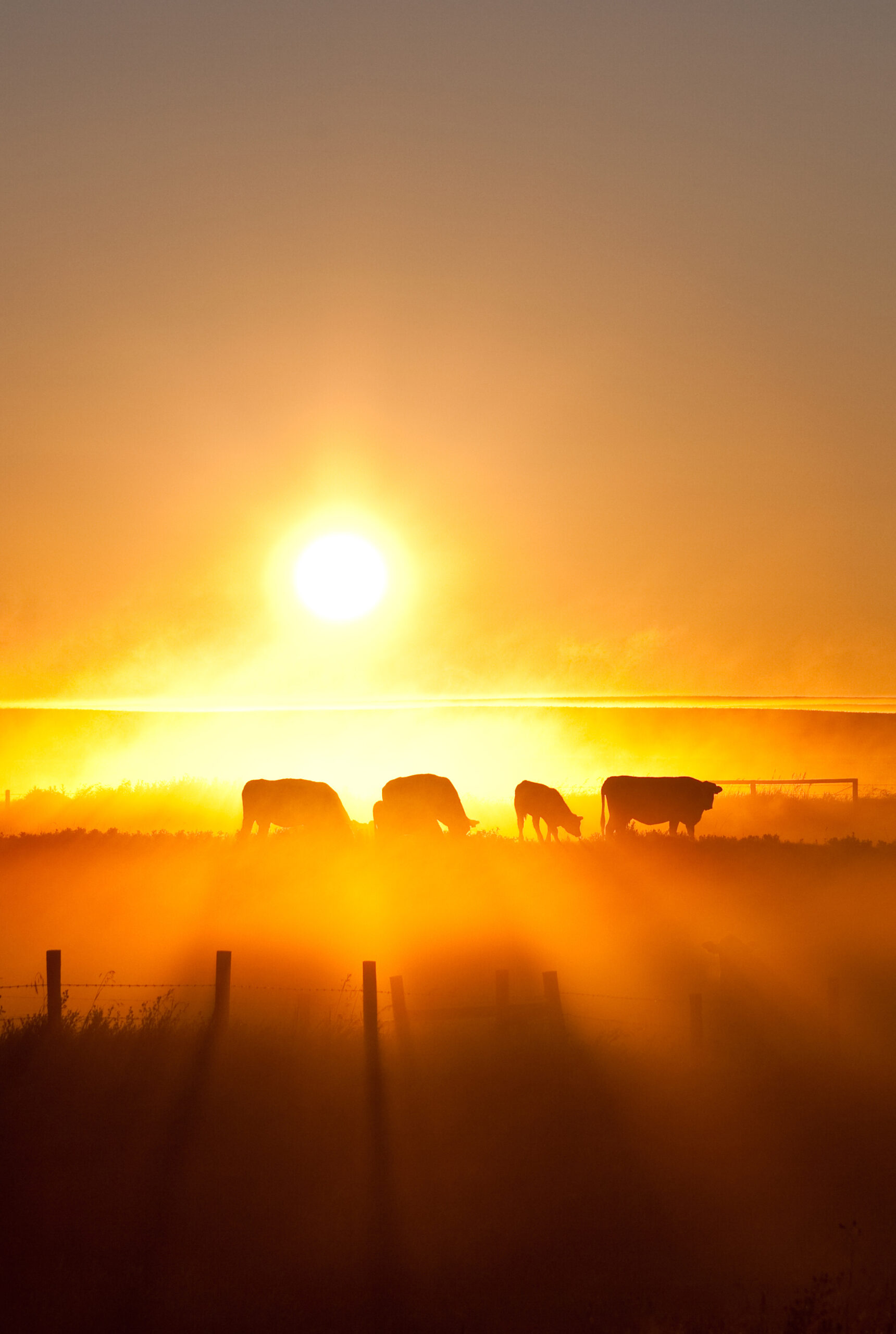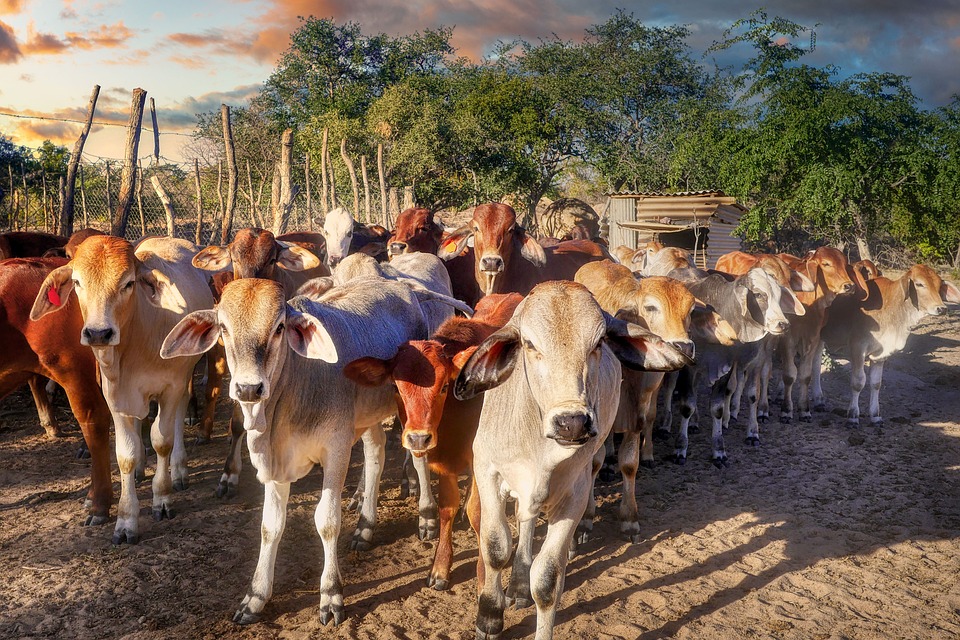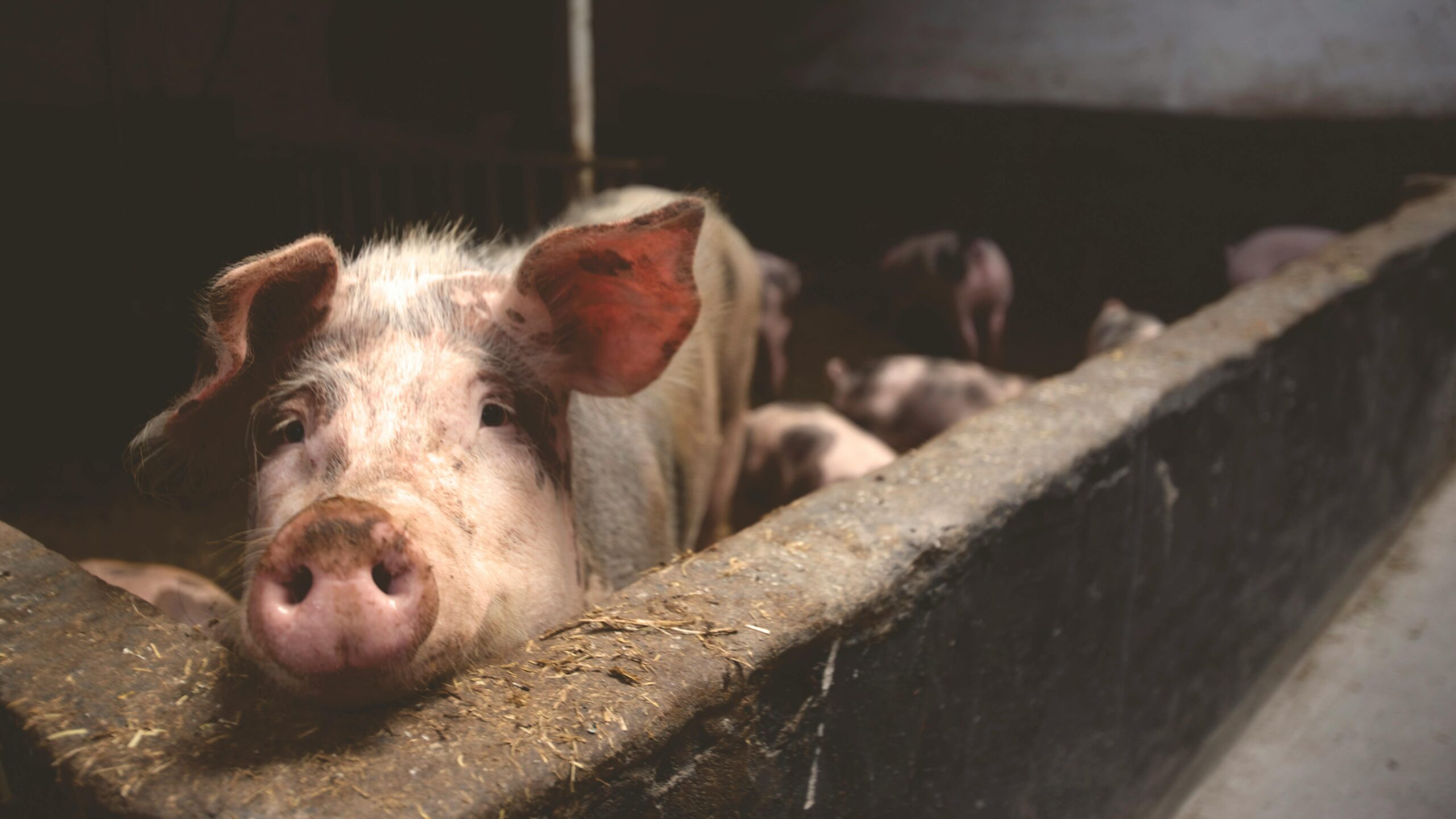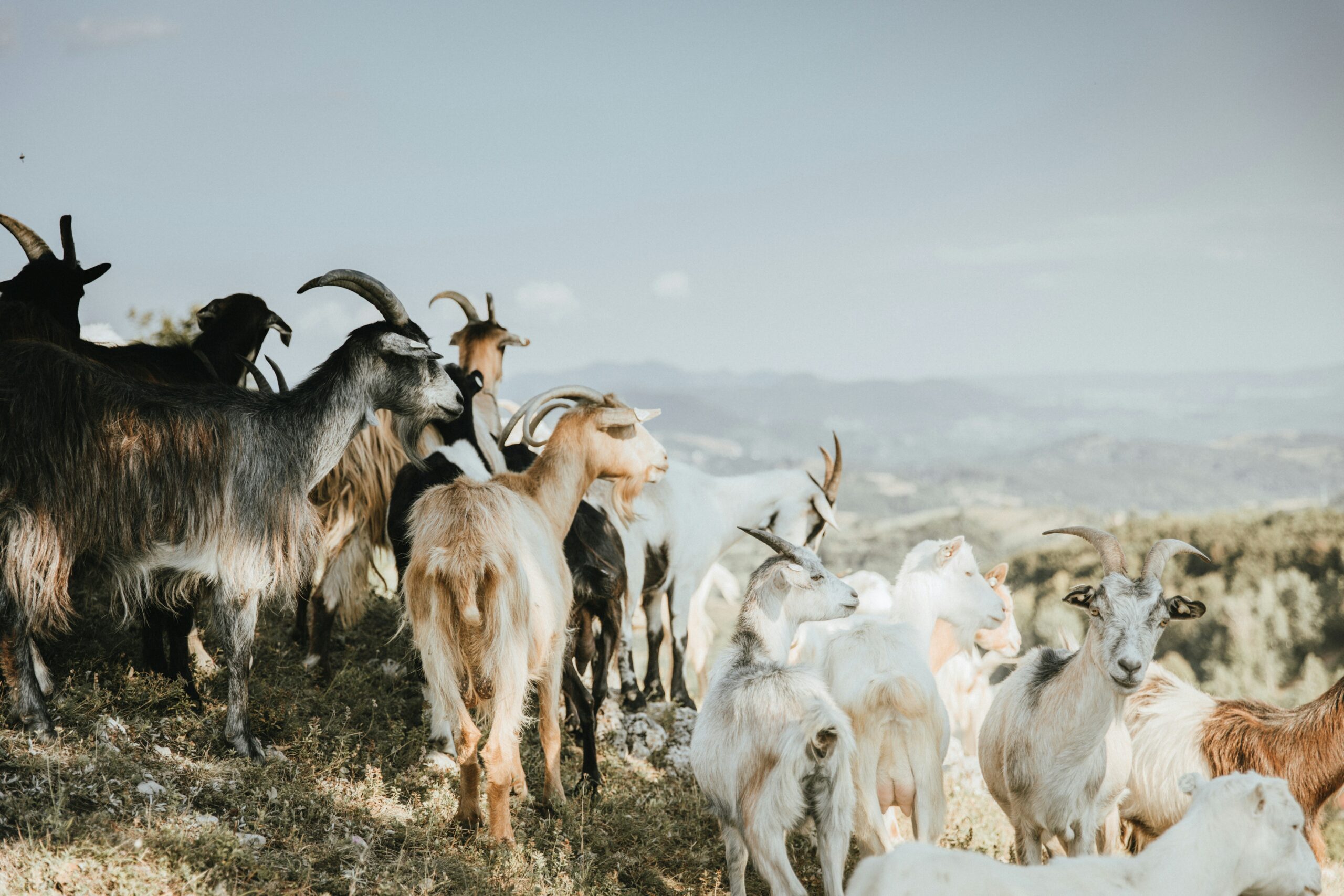Drakensberger
In 1497, the seafarer, Vasco da Gama, first encountered black oxen when rounding the Cape. In 1836, several Voortrekker families left the Cape with similar black oxen, referred to as Vaderland cattle. Most of these farmers settled along the Drakensberg mountain range, where they developed the breed further. In 1947 the Drakensberger Cattle Breeders’ Society was formed.
Drakensbergers are a mediumsized beef breed, with bulls weighing 820 to 1 100 kg and cows weighing 550 to 720 kg.
They are black with smooth coats and clearly defined bodies. These cattle have a tranquil temperament; cows have excellent mothering abilities; easy calving because calves are small; and a low abortion rate. The breed is disease and internal parasite resistant, ultraviolet radiation resistant, and heat resistant due to its loose hide and coat.
Production regions
The Drakensberger is popular all over Southern Africa because of its adaptability, hardiness, and ability to thrive on poor-quality veld. Having strong legs and hard “buffalo” claws, they are able to easily negotiate even the most rugged terrain.

Drakensberger bull. (Image source: drakensbergers.co.za)
Their high milk production enables weaner calves to obtain a 60 to 70% skeletal development. Some weaners can reach 206 kg at the weaning age of 205 days.
Use
A closed herd of Drakensbergers can produce some of the best beef in the world, but they are also frequently crossed with other breeds to create hybrids. The breed has no known ancestors, so breeding it with another breeds yields superior results. They are often used as a foundation herd for semen or bulls from other breeds because of their maternal qualities. These cattle are classified as a subspecies in the Bos indicus group.

Drakensberger cows. (Image source: drakensbergers.co.za)
Meat quality
More than 80% of Drakensbergers have a marbling gene, which is the same gene that makes Angus and Wagyu beef so popular. As a result, the meat is juicy, tender, and easy to slice.
Hereford
Hereford is a popular beef breed in Southern Africa. The Hereford breed appears to have evolved from draught oxen descended from Roman Briton small red cattle and large Welsh breeds.
The breed evolved in Herefordshire, a historic agricultural region of England. It is one of the oldest English breeds, with a high meat yield and production efficiency being top priorities.
The cows weigh 500 to 650 kg, and bulls between 900 and 1 100 kg.
Hereford cattle have a distinctive white head, crest, underline, socks, and tail switch. They have a reddish hue and can be polled or horned. As a result of their early maturation and ability to produce high-quality meat from low-quality forage, they are known around the world as “the breed that made grass famous”.

Hereford bull. (Image source: gemstonecattle.com)
Production regions
Because of their hardiness and ability to thrive in the harshest of climates, Herefords can be found all over. They can survive anywhere, from the bitter cold of winter to the sweltering heat of warmer regions. Since the Hereford has developed immunity to tick-borne diseases, purebred herds can now be found in the northern parts of South Africa, particularly in the heartwater and redwater regions.
In warmer climates, crosses with Zebu cattle are beneficial, while more temperate ones benefit from crosses with Angus cattle. Hereford cattle are classified as a subspecies in the Bos taurus group.
Use
Hereford cattle can be used on their own in closed herds, but they are also very popular in crossbreeding programmes because of their high level of heterosis. This is because they are pure and have good mothering skills, fertility, and utilisation of forage.

Hereford cow and calf. (Image source: gemstonecattle.com)
Meat quality
Even though they are a popular breed in feedlots, they can also be “fattened” on natural and established pastures, allowing them to truly be sold as “grass fed”. Cattle farmers, feedlot owners, and consumers around the world recognise the distinctive white head as a quality trait marker.
Limousin
Limousin cattle were originally used as draught animals and slaughtered when they became too weak to work. They have the adaptability to thrive in harsh, rugged, and rocky conditions. The breed has excellent meat-producing qualities and is produced worldwide.
The Limousin is known as the “carcass breed” for its exceptional beef qualities. Feedlot cattle have excellent feed conversion, gaining an average of two kilogrammes per day. Because it can produce a lot of meat, this breed often wins carcass competitions.
The breed is characterised as being medium-framed, with cows weighing 650 to 850 kg and bulls weighing 1 000 to 1 300 kg. Despite their size, the cattle are lean with no excessive fat. They are easy to handle on the farm or in a feedlot because of their docility.
The cows are extremely fertile and produce small calves for easy calving. Despite this, the calves grow rapidly due to the high quality milk produced. In the course of her productive life, a cow can produce as many as fourteen calves.

Limousin bull. (Image source: agriland.ie)
Production region
Limousin cattle are well-known for their adaptability and ability to thrive in harsh environments. They thrive in the Highveld’s cold winters with lowpalatable sourveld grasses.
Use
However, the Limousin is also used as a component for crossbreeding programmes, whereby the meat quality of other breeds is improved. These cattle are classified as a subspecies in the Bos taurus group.
Meat quality

Limousin cows. (Image source: grangelimousins.com)
Feed conversion and average daily gain are excellent with “naturally” produced meat. The cattle are naturally raised without the use of hormones, making their meat exceptionally tender, tasty, and healthy. They also produce low-fat carcasses with a high slaughter percentage and high meat-to-bone ratios.
Nguni
In the past, these cattle were more than just a source of food and milk; they were also used to pay wedding gifts, and this practise continues to this day. Keeping as many cattle as possible led to overcrowding and the belief that these animals were underperforming.
The Nguni is medium-framed, with cows weighing 300 to 400 kg and bulls weighing 500 to 600 kg. Ticks do not usually attach to Nguni cattle due to their smooth coats and short hair.
Colours, patterns, and horn shapes differ from other breeds. Skin and eye cancer is prevented by the unique pigmentation of their hides, which is used to make handbags, floor covers, and wall art.

Nguni bull. (Image source: nguni.co.za)
The breed has evolved to withstand the harsh conditions of Southern Africa, including heat, cold, and disease. According to research, they are the most tick resistant of all cattle breeds.
Nguni cattle are calm and easy to handle. As with the Afrikaner and Brahman, their feed conversion rate is superior to most other breeds. The Nguni Cattle Breeders Society labels it as the breed that “produces the most kilogrammes of beef per hectare at the lowest cost”, making the Nguni “the most profitable and economically sustainable beef breed”.
Production region
In Southern Africa, Nguni cattle are kept because of their toughness and ability to thrive on poor quality veld. As a result of climate change, Southern Africa is likely to have more extreme weather. The fact that Nguni cattle can handle high temperatures shows potential for its role in meat production in the future.
Use
Although primarily a beef breed, Ngunis may also be used for milk production, and their hides are highly sought after. Nguni cattle are classified as a subspecies in the Bos taurus africanus group.

Nguni cows and calves. (Image source: nguni.co.za)
Depending on how they are kept, they can be used to improve the meat quality or maternal characteristics of other breeds. With early sexual maturity, high reproductive rates, easy calving, and above-average milk production, the Nguni has excellent maternal traits. As a result, various crossbreeding programmes make use of the dam line.
Meat quality
Although the quality of Nguni meat is on par with that of most other breeds, the meat’s colour tends to be darker, making it more attractive for the consumer. As a result of its hardiness, the breed can be allowed to finish itself off on the veld naturally. The term “finished off on the veld” refers to the fact that these cattle do not need to spend time in a feedlot.
References
Southafrica.co.za. (2022). South African Beef Breeds. [online] Available at: https://southafrica.co.za/south-african-beef-breeds.html.
Loubser, A., Schutte, N. and Hofmeyr, I., (2007). Cattle breeds of South Africa. Pretoria, AgriConnect, Pages 97-165.

